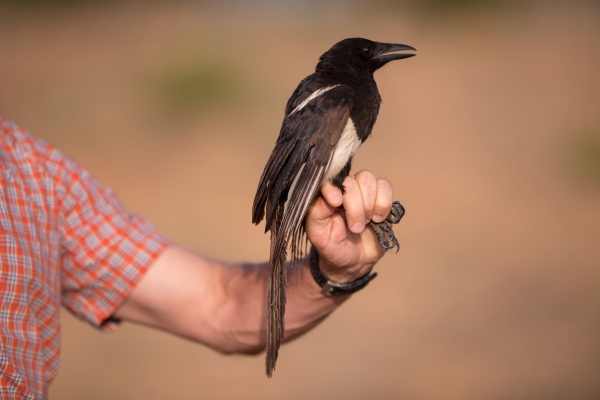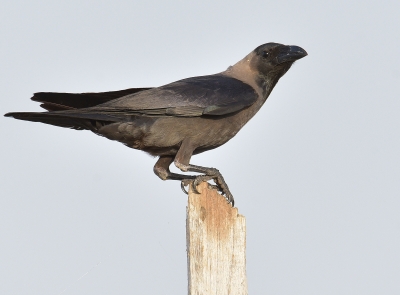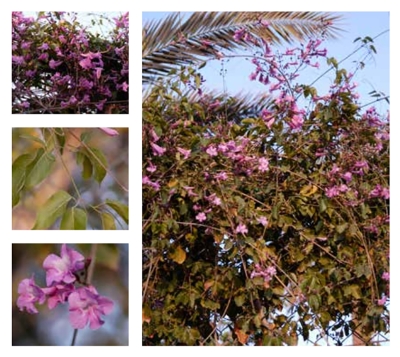
The Aseer Magpie (Pica asirensis) is one of the bird species recorded in the Kingdom of Saudi Arabia. It is a very rare resident breeding bird, confined to a small area in the Aseer Mountains. It is the only bird species endemic to Saudi Arabia and one of nineteen bird species native to Jurf Raydah Natural Reserve, with its activity concentrated in Tanumah Governorate.
Description of the Aseer Magpie
The Aseer magpie measures forty-six cm in length and weighs 240 g. It has a dark black color with a white belly. The bird is known for its high intelligence and loud calls, which it uses to communicate with its family group.
Diet of the Aseer Magpie
The diet of the Aseer magpie is not well documented, but it is an omnivorous and opportunistic feeder. Its diet includes invertebrates, roadkill, plants, and human food scraps. It is an active daytime bird that forages in family groups of up to seven birds.
Habitat of the Aseer Magpie
The Aseer magpie is found at elevations above 2,100 m in shaded juniper forests, often on south-facing slopes. It also inhabits cultivated areas and open foothills with scattered trees, including juniper (Juniperus procera), acacia (Vachellia spp.), and broad-leaved trees. It is one of 550 bird species recorded in Saudi Arabia, including 219 breeding species, 280 migratory species, and fifty-one vagrant species. Additionally, twenty-seven bird species in Saudi Arabia are globally threatened with extinction. Saudi Arabia is home to nineteen endemic and near-endemic bird species of the Arabian Peninsula, as its geographical location between East Asia, Europe, and Africa places it along one of the world's most significant bird migration routes.
Breeding of the Aseer Magpie
The Aseer magpie follows a monogamous territorial breeding system and is socially monogamous. Both parents cooperate in nest-building and chick-rearing, with the female incubating the eggs. The nest is a large, bowl-shaped structure made of twigs, lined with a thick layer of mud. It may also be lined with fine twigs and rootlets. The bird constructs a large dome of twigs over the bowl, leaving an entrance at the edge.
The Aseer magpie builds its nest at a height ranging between three and eight m above the ground, typically on trees, especially juniper (Juniperus procera) and acacia (Vachellia spp.). Although the nest is sturdy and may last for several years, the bird builds a new nest each year. The exact number of eggs is unknown, but in similar species, it ranges between two and eight eggs, with reports commonly indicating two to five chicks or fledglings. The incubation period lasts twenty-one to twenty-two days, while the nesting period lasts between twenty-four and thirty days.
Conservation of the Aseer Magpie
The Aseer magpie is globally classified as an endangered species due to its extremely low population and confinement to a single subpopulation. Historically, it was found in northern Taif, but its remaining population is steadily declining. With fewer than one hundred breeding pairs worldwide, it is considered one of the rarest birds in the world.
In 2018, Saudi Aramco, in collaboration with the Saudi Wildlife Authority and the Smithsonian Institution, launched a project to protect the Aseer magpie from extinction. The project began with a research study to survey its population, density, habitat use, and distribution, as well as the causes of its population decline. Advanced tracking devices were attached to some birds to monitor their behavior, habitat, and movement patterns. DNA analysis was conducted using blood samples to assess genetic variations among individuals. Each monitored bird was fitted with a leg band and a tracking device to help researchers gain a better understanding of the factors driving the species' decline and mitigate their impact. This initiative aims to develop a conservation strategy to ensure the long-term survival of a stable population of the Aseer magpie.
Related quizzes
Related articles


